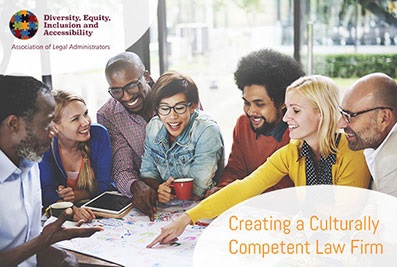Diversity, Equity, Inclusion and Accessibility Educational Presentations
Diversity, Equity, Inclusion and Accessibility Committee volunteers are currently available to present to ALA local chapters on one of these four powerful programs at your location! Contact d[email protected] to discuss your program and learn more about how the committee can assist you in achieving your diversity and inclusion educational goals.*
These educational presentations have each been approved for CLM credit hours, as follows:
- CLM® Application Credit: 1 hour(s) of Organizational Development
- CLM® Application Credit for Functional Specialists: 1 hour(s) in the subject area of Human Resources Management (HR) toward the additional hours required of some Functional Specialists to fulfill the CLM application.
- CLM® Recertification Credit: 1 hour(s) in the subject area of Human Resources Management (HR)
Questions regarding continuing education (CE) credits should be directed to [email protected].
You Belong Here: Creating an Inclusive Environment Where Everyone Belongs
This session will provide guidance on how leaders can enhance the sense of belonging in a firm by creating an open and welcoming environment in which employees can be their authentic selves. You'll explore the economic and racial injustice crises since the onset of COVID-19 from a diversity, equity and inclusion lens. You'll consider implicit bias and how the sooner we're able to recognize our biases and become more self-aware, the better we'll be as leaders. You'll also learn about imposter syndrome and how to recognize and address employees who feel as though they do not belong.
Participants will:
- Develop diversity, equity, inclusion and accessibility programming for employees.
- Create awareness of implicit bias and learn how to form healthy working relationships with employees who may not be similar to you.
- Identify solutions for increasing employee engagement by creating a space of inclusiveness.
- Appraise how to be a true ally to employees in underrepresented communities in the workplace.
How to Stop Bullies in the Workplace
We hear stories about bullies all the time, mostly among school-age children and in school settings. But according to the Workplace Bullying Institute, 30% of employees have direct experience being bullied. This presentation provides an opportunity to learn the difference between harassment and bullying and will touch on the intersectionality of harassment, bullying and racism. Participants will understand the impact on their employees when this behavior is allowed to continue. And they will learn how to recognize, acknowledge and stop bullying in the legal profession.
Participants will:
- Learn examples of various implicit and blatant bullying behaviors.
- Gain a better understanding of how a culture of silence enables bullying behaviors in the workplace.
- Learn to distinguish between bullying and harassment behaviors.
- Understand how bullying behaviors affect the legal profession.
- Receive tips and guidance to implement actionable measures for stopping bullies in the workplace.

Creating a Culturally Competent Law Firm
Cultural competence is an awareness of the cultural differences that makes each person unique; it is the ability to interact with and appreciate belief systems that differ from our own, thereby creating a way for everyone to work cross culturally. The goal of this presentation is to enhance knowledge and skills for building and maintaining a multicultural organization and becoming positive change agents for our workplaces. This program asks participants to understand and reflect on their role as a leader responsible for promoting inclusion and building successful and effective working relationships within our organizations.
Participants will:
- Define diversity and culture and its impact on relationships within our organizations.
- Recognize our unconscious biases and how they impact our culture and hiring decisions.
- Understand the importance of collaborative working relationships with diverse others and the benefits of diverse perspectives in problem solving.
- Recognize the importance of infusing diversity into our organizations to achieve a more productive, respectful and cooperative work environment.
25 Diversity and Inclusion Tips
Why is diversity important, and how can we do a better job bringing diversity and inclusion to our lives and the workplace? Businesses must pursue diverse talent and achieve real inclusion if they want to be successful beyond today, and into tomorrow. Beginning with a fundamental understanding of diversity and its many dimensions, participants will achieve greater comprehension of the types and layers of diversity, beyond those as defined by the EEOC. Once the concept of diversity is explored, how do we go on to create real inclusion? How can we create policies and procedures that support our definition of success? What strategies can we employ, and where can we get help if we need it?
Participants will:
- Define diversity and its many dimensions.
- Participants will be able to identify some of the top-level reasons diversity and inclusion are important to the success of businesses today.
- Identify pitfalls and barriers to diversity and inclusion. Participants will become familiar with biases we all have, how to foster awareness of these unconscious beliefs and counteract them.
- Participants will be able to identify workplace and recruitment/retention considerations related to differences including religion, age, disabilities, gender issues, sexuality, gender identification, military status and more.
* Speakers appear on a complimentary basis based on schedule and availability, however travel reimbursement of basic expenses may be required.